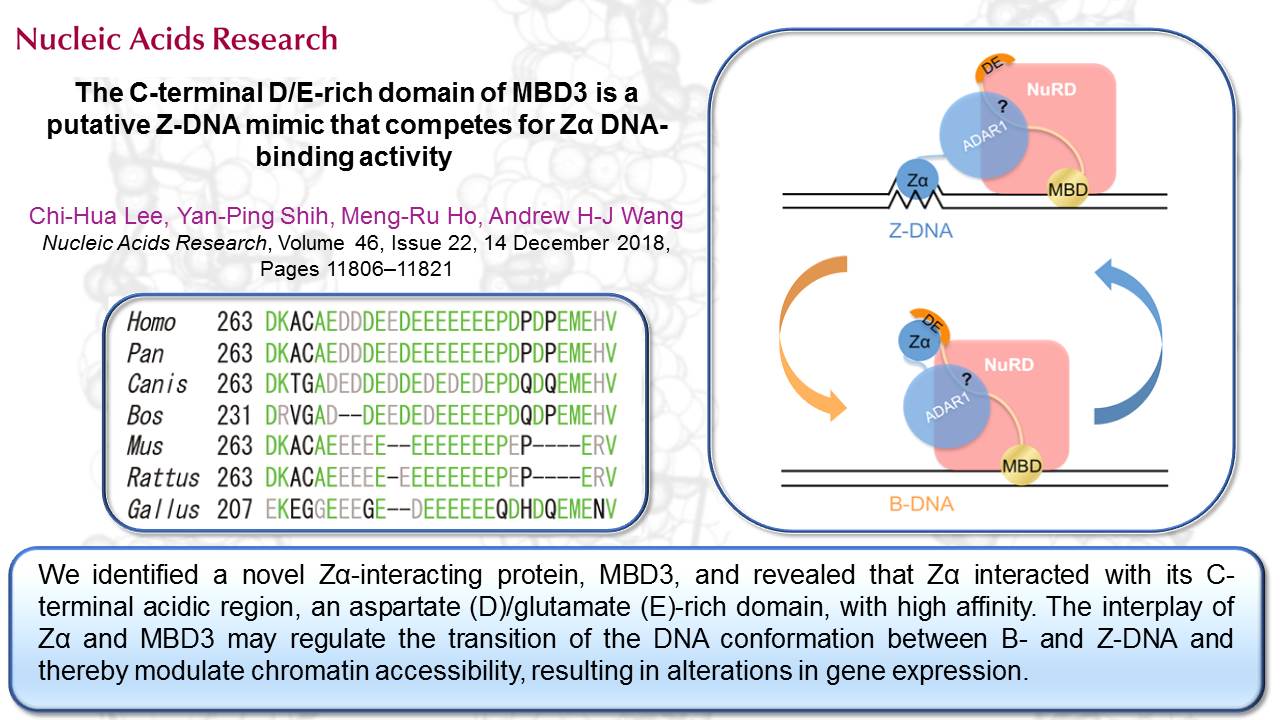
 中央研究院 生物化學研究所
中央研究院 生物化學研究所
The Z-DNA binding domain (Zα), derived from the human RNA editing enzyme ADAR1, can induce and stabilize the Z-DNA conformation. However, the biological function of Zα/Z-DNA remains elusive. Herein, we sought to identify proteins associated with Zα to gain insight into the functional network of Zα/Z-DNA. By pull-down, biophysical and biochemical analyses, we identified a novel Zα-interacting protein, MBD3, and revealed that Zα interacted with its C-terminal acidic region, an aspartate (D)/glutamate (E)-rich domain, with high affinity. The D/E-rich domain of MBD3 may act as a DNA mimic to compete with Z-DNA for binding to Zα. Dimerization of MBD3 via intermolecular interaction of the D/E-rich domain and its N-terminal DNA binding domain, a methyl-CpG-binding domain (MBD), attenuated the high affinity interaction of Zα and the D/E-rich domain. By monitoring the conformation transition of DNA, we found that Zα could compete with the MBD domain for binding to the Z-DNA forming sequence, but not vice versa. Furthermore, co-immunoprecipitation experiments confirmed the interaction of MBD3 and ADAR1 in vivo. Our findings suggest that the interplay of Zα and MBD3 may regulate the transition of the DNA conformation between B- and Z-DNA and thereby modulate chromatin accessibility, resulting in alterations in gene expression.
